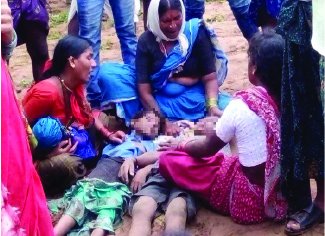It was virtually a bolt from the blue for people in the states of Uttar Pradesh, Rajasthan and Madhya Pradesh when more than 70 people were killed by lightning strikes on 12 July 2021. Barely a month before, on June 7 in West Bengal, 27 lightning deaths were reported. These are not isolated cases but reflect an overall rising trend in lightning incidents and related mortality.
Last year (2020) between June 25 June and July 4, 120 persons were killed in Bihar due to lightning strikes. There were more deaths and injuries around the same time in neighbouring state of Uttar Pradesh for the same reason.
Although the number of deaths due to lightning has always been high in the country, the incidence has never got the attention it deserves beyond incidental reporting. Now with rapid changes in the climate, lightning strikes have become a growing hazardous phenomenon.
It has been pointed out generally that risks from natural disasters are likely to increase with climate change. More specifically, attention has also been drawn to the likelihood of more and worse lightning strikes under its impact.
For reasons more than one, India stands at a much higher risk on this count. A large number of people, including farmers – usually in contact with water –, cattle-grazers, forest-produce gatherers, pastoral and other nomads, destitute and homeless people are totally exposed to the risk as they are likely to be away from shelter while working in rainstorm and lightning conditions.
A system based on lightning detecting sensor machines and related apps is available to give warnings. This system needs to be improved and extended in the villages.This as well as all other options should be explored to prevent lightning related deaths.
Death due to lightning deserves much more attention than it has been given so far. Improving sanitation can lower the risk of people getting caught in morning rainstorms and lightning in open places.
With scientists predicting rise in lightning events in times of climate change, better warning systems for vulnerable groups as well as more and improved protection devices are needed. In addition, the traditional wisdom of people like cattle grazers, farmers and nomads can also be tapped to find about protection practices that may be practical and relevant in their local context. Scientifically well-established precautions should be better publicised among all sections of people.


 [/column]
[/column]